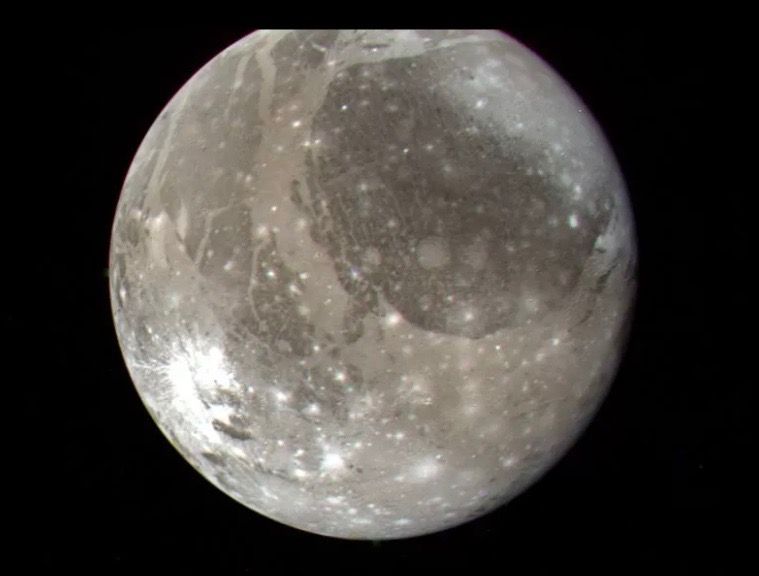Water vapor detected on huge Jupiter moon Ganymede for 1st time
By Charles Q. Choi about 1 hour ago
This could be a trend for icy bodies throughout the solar system and beyond.

The Jupiter moon Ganymede, the largest satellite in the solar system, as seen by NASA’s Voyager 2 spacecraft on July 7, 1979, from a distance of 745,000 miles (1.2 million kilometers). (Image credit: NASA)
In the wisp-thin sky of Jupiter's moon Ganymede, the largest satellite in the solar system, astronomers have for the first time detected evidence of water vapor, a new study finds.
The discovery could shed light on similar watery atmospheres that may envelop other icy bodies inr on its surface is frozen solid. Any liquid water Ganymede possesses would lurk about 100 miles (160 kilometers) below its crust. the solar system and beyond, researchers said.
Previous research suggested that Ganymede — which is larger than Mercury and Pluto, and only slightly smaller than Mars — may contain more water than all of Earth's oceans combined. However, the Jovian moon is so cold that water on its surface is frozen solid. Any liquid water Ganymede possesses would lurk about 100 miles (160 kilometers) below its crust.
Prior work suggested that ice on Ganymede's surface could turn from a solid directly to a gas, skipping a liquid form, so that water vapor could form part of the giant moon's thin atmosphere. However, evidence of this water has proved elusive — until now.
More:
https://www.space.com/jupiter-moon-ganymede-water-vapor-discovery
